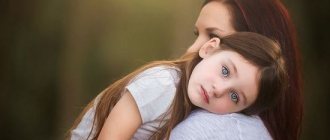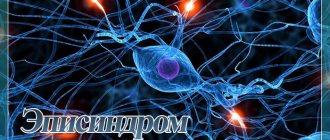Alcohol abuse has an extremely detrimental effect on both the physical and psychological state, provoking many psychosomatic and behavioral disorders. One of the most common disorders caused by alcoholism is psychosis, including alcoholic epilepsy.
- Read in the article:
- What is alcoholic epilepsy?
- Symptoms of seizures in alcoholism
- Causes of epileptic seizure from alcohol
- How to avoid an epileptic attack from alcohol?
- Types of alcoholic epilepsy
- Beer epilepsy
- Acquired epilepsy from alcohol
- Hangover epilepsy
- Consequences of alcoholic epilepsy
- Foaming at the mouth
- Seizures in alcoholism
- Blindness
- Drunk fainting
- How long does an alcohol attack last?
- First aid for alcoholic epilepsy
- Treatment of alcoholic epilepsy at home and in the AlkoZdrav clinic
Treatment prices:
| Sign up for a free and anonymous consultation with a narcologist | 0 ₽ |
| Initial consultation with a narcologist | for free |
| Consultation with a psychologist in person or Skype | 3 000 ₽ |
| Psychiatrist consultation | 5 000 ₽ |
| Psychodiagnostics / pathological diagnostics | 7 500 ₽ |
| Narcopsychotherapy | 50 000 ₽ |
| Consultation with a psychologist and selection of a treatment and rehabilitation program for an addict | for free |
| Intervention session | 12 000 ₽ |
| Social rehabilitation of alcohol addicts | for free |
| Outpatient rehabilitation in Moscow | 33 000 ₽ |
| Standard rehabilitation program | 40 000 ₽ |
| Intensive rehabilitation program | 80 000 ₽ |
| Premium rehabilitation program | 120 000 ₽ |
| Medical and social rehabilitation (21 days) | 150 000 ₽ |
| Rehabilitation Spain, Bulgaria | 200 000 ₽ |
| VIP rehabilitation program | 350 000 ₽ |
| Online addiction rehabilitation course | 28 000 ₽ |
| Rehabilitation of age-related alcohol addicts | 50 000 ₽ |
| Rehabilitation of drug addicts | 60 000 ₽ |
| Adolescent social-psychological-pedagogical rehabilitation | 70 000 ₽ |
| Psychotherapy | 5 000 ₽ |
| Family psychotherapy | 6 000 ₽ |
| Support groups for loved ones of addicts | for free |
| Webinars for relatives of addicts | for free |
| School for codependents | 3 000 ₽ |
| Transfer support | negotiable |
| Motivation for treatment | 6 000 ₽ |
| Escort to the clinic | 6 000 ₽ |
| Testing (urine/blood/hair) | specify |
Expand
Still have questions? Call us!
8
Free consultation and appointment
Provoking factors
Often, epileptic seizures occur from various “triggers” - situations that provoke an attack. This could be a bright flashing picture, a sequence of sharp sounds. There are cases where overly bright cartoon screensavers caused a negative reaction in children. The danger comes from flashing, rapidly changing images that overload sensitive systems.
If the attack is caused by just such a factor, then it is better to get rid of it at the first opportunity: turn off the TV, turn down the volume. After the attack ends, ensure that you stay in a quiet room with dim lighting. If you do not get rid of the triggers, they can provoke a series of repeated attacks, which will not be easy for the body to survive.
What is alcoholic epilepsy?
Alcoholic epilepsy includes a number of physiological conditions in which the patient experiences convulsions, seizures, automatic actions or disturbances of consciousness. This disorder is classified as a psychotic disorder that occurs mainly at the third stage of addiction development.
The disorder most often manifests itself in men aged 25 to 50 years who have suffered from alcoholism for 5-10 years. But sometimes epilepsy occurs after 2-3 years of regular alcohol consumption, this is especially true for young people and adolescents whose psyche has not yet fully developed.
Symptoms of seizures in alcoholism
Long-term drinking bouts and regular intoxication of the body with ethanol products lead to disruptions in the functioning of all organs. Epilepsy is cumulative in nature - its symptoms are invisible in the first stages of the disease. The disease is most dangerous when consuming alcohol substitutes, since in this case, in addition to alcohol poisoning, other toxic substances also affect the body.
An epileptic seizure can occur both in a state of severe alcoholic intoxication and in a state of hangover, on the 1-2 day of alcohol withdrawal. The symptoms of the disease are quite varied and largely depend on the lesions.
In general, symptoms of epilepsy can be as follows:
- Blue skin;
- Loss of orientation in time and space;
- Cognitive impairment;
- The appearance of acute or pressing muscle pain and headaches;
- There is a growing feeling of anxiety, irritability, outbreaks of aggression and hysteria are possible;
- The person may utter meaningless phrases.
Unlike other types of epilepsy, before the onset of an alcoholic seizure, a person develops obvious disturbances in consciousness and thinking. His mood changes sharply, excessive activity appears, and auditory hallucinations are possible.
Causes of epileptic seizure from alcohol
The development of alcohol dependence leads to irreversible changes in the nervous system and cerebral cortex. As a result of pronounced changes in brain function and metabolism, alcoholic epilepsy develops. It manifests itself in convulsive and non-convulsive forms.
The occurrence of epileptic conditions themselves is most often associated with:
- Lack of magnesium, potassium, B vitamins;
- Metabolic disorders associated with the influence of alcohol on the body;
- 2-3 days after a long binge, a large amount of glutamate accumulates in the body, provoking an attack of epilepsy;
- An excess of gamma-aminobutyric acids, which overexcite neurons and provoke convulsive reactions;
- Damage to natural “barriers” that protect the brain from the effects of alcohol toxins;
- Problems with the liver and pancreas.
The main factor provoking the occurrence of an epileptic seizure is blood thickening during the onset of withdrawal syndrome. This greatly slows down blood flow and disrupts the nutrition of nerve tissue, resulting in oxygen starvation, which causes a withdrawal attack.
Consequences of epileptic episodes in alcoholics
The very “convulsive readiness” in persons suffering from chronic alcoholism indicates deep-seated brain damage. Excessive consumption of ethanol leads to encephalopathy , which manifests itself as follows.
Sudden cardiac arrest due to arrhythmia, falling into a coma, and unexpected death are possible.
Pneumonia also occurs ; it is often accompanied by pulmonary edema, which is also life-threatening.
In some cases, an alcohol addict suffers severe injuries that lead to disability.
An unconscious state is fraught with retraction of the tongue and suffocation; the patient can also choke on his own vomit at this time.
In those suffering from alcoholic epilepsy, personality degradation occurs at an accelerated pace, aggressiveness increases, which can negatively affect others. Such patients often have suicidal thoughts, and with a psychotic disorder they may commit suicide.
Death can also occur from swelling of the brain stem tissue when it is wedged into the foramen magnum.
Since the conditions described pose a direct threat to the life of the addict, in no case should you leave him without qualified medical care , much less try to relieve the attack on your own, at home.
Treatment calculator
Field score:
Total score:
Patient age
Length of use
What he uses Has he previously undergone treatment Consent to treatment Concomitant diseases Employment
Waiting for values to be entered
The greatest likelihood of alcohol-induced epilepsy occurs in people with the following diseases:
- skull injuries;
- circulatory disorders;
- atherosclerosis;
- past infectious diseases;
- in the presence of neoplasms;
- with a genetic predisposition (a blood relative suffered from epilepsy).
How to avoid an epileptic attack from alcohol?
Alcoholic epilepsy develops only when there is a developed dependence on alcoholic beverages. To avoid seizures, it is necessary to carry out full treatment of alcoholism.
Literature:
- Alcoholic epilepsy: a manual for doctors / V. O. Generalov et al.; edited by V. O. Generalova. – 2nd ed. – Moscow: Max Press, 2015. – 43 p.
- Psychophysiological aspects of epileptic syndrome of alcoholic origin: abstract of thesis. ... Candidate of Medical Sciences: 19.00.02, 14.00.45 / Elistratova Tatyana Vladimirovna; [Place of protection: North. state honey. University]. – Arkhangelsk, 2007. – 19 p.
- Psychiatry: Textbook. for medical students universities / N.M. Zharikov, Yu.G. Tulip. – Moscow: Medicine, 2002. – 539 p.
License and certificates:
To prevent the development of epilepsy after long-term drinking bouts, it is necessary not to try to overcome withdrawal symptoms on your own, but to go to a drug treatment clinic to detoxify the body. Using a drip, doctors will remove alcohol toxins from the body, which will help avoid an epileptic attack.
Helpful information
Find out:
- What does a breakdown after coding for alcoholism lead to?
- What will a pregnant woman’s alcoholism mean for her unborn child and is it possible to restore the health of a baby with intrauterine alcohol syndrome .
- How to identify alcohol addiction and the most common reasons why it occurs.
- What are the consequences of drug abuse, what are the dangers of drug addiction, where to get urgent drug treatment at home and in a clinic.
Types of alcoholic epilepsy
Beer epilepsy
Beer drinks and other alcoholic substitutes are very strong provocateurs of epileptic conditions, since, in addition to alcoholic toxins, they contain a large number of other substances that poison the body.
Another danger of beer is drinking the drink in large quantities. Many people consider low-alcohol drinks to be harmless, so they consider it normal to drink liters of them. As a result, acute intoxication with toxins occurs, which can provoke an attack of epilepsy.
Acquired epilepsy from alcohol
Drunken epilepsy is an acquired disease that develops against the background of pathological changes that arise due to addiction. Epilepsy most often occurs after binge drinking, with sudden withdrawal of alcoholic beverages. Frequent attacks due to severe alcohol intoxication or a hangover lead to the disease becoming chronic. Then attacks can be observed even with complete sobriety.
Hangover epilepsy
Epilepsy after heavy drinking occurs when there is a sharp decrease in the concentration of alcohol in the blood. Most often this occurs in a hangover after prolonged use, when the level of the convulsive threshold decreases.
Data
· Epilepsy is a term for a group of conditions that involve abnormal electrical activity in the brain.
· The disease causes various symptoms such as seizures, loss of coordination, difficulty speaking, visual disturbances and loss of consciousness.
· Epileptic seizures occur when a group of brain cells fire simultaneously in an abnormal manner due to a short circuit.
· The abnormal electrical signals will then be transmitted to other parts of the brain or to the body depending on which brain cells are activated.
· Alcoholic epilepsy is one of the most severe forms of epileptic psychosis.
· Chronic alcoholism leads to damage to brain cells and begins to manifest itself in the form of epileptic seizures, the frequency and duration of which increases over time.
Consequences of alcoholic epilepsy
After each epileptic seizure, serious disorders occur in the brain, often irreversible - nerve tissue in the cerebral cortex and subcortical structures die. As a result, rapid intellectual and personal degradation can be observed.
Alcohol episyndrome significantly aggravates changes in the personal and cognitive spheres that occur due to alcohol, characterized by:
- deviant behavior;
- irritability;
- bitterness;
- decrease in intellectual and mental activity.
Even one-time epileptic attacks with the manifestation of convulsive syndromes always occur against the background of developed alcoholic encephalopathy, which leads to irreversible pathologies of the brain.
Still have questions? Call us!
8
Free consultation and appointment
Foaming at the mouth
Foam at the mouth that appears during an epileptic seizure can cause a person to choke. It occurs due to spasm of the stomach muscles and muscle tissue.
Seizures in alcoholism
At the beginning of an epileptic attack, the patient experiences convulsions; due to muscle tension, he falls, arches, and throws his head back. At this time, breathing stops, the skin turns pale, the pupils dilate.
During seizures, the greatest danger is injury from falling or being near dangerous objects. Muscle spasms may cause temporary paralysis.
Blindness
Blindness, deafness and disruption of the speech apparatus are frequent companions of alcoholic seizures. Disruption of the normal transmission of signals from the central nervous system and severe muscle spasms lead to disruption of the functioning of the sensory organs.
Drunk fainting
Stopping breathing and convulsions during an epileptic attack often leads to loss of consciousness of the patient. This can be observed especially often in a state of severe intoxication (binge), which provokes disruption of the nervous system, which leads to the appearance of fainting.
Second group
Clinical features:
— convulsive attacks of epilepsy occur both during periods of sobriety and after heavy drinking in a state of abstinence;
- generalized convulsive seizures with loss of consciousness during the period of sobriety can develop even several years after the cessation of alcoholism (sudden loss of consciousness, accompanied by a cry and a sharp fall, forced turning of the head and eyes to the sides, after which tonic and clonic convulsions of the arms and legs develop, drooling ).
- such patients may develop epistatus (convulsive attacks follow one after another, cardiac arrest is possible), during which the patient may die.
Diagnostics:
- when performing an EEG while awake, epileptic activity is detected only in 30-40% of patients;
- conducting an EEG during sleep is more informative - in 100% of cases epileptic activity is recorded with localization in the hippocampus.
Treatment:
— treatment of alcoholism in order to keep the patient sober;
- You need to take anticonvulsants on an ongoing basis.
How long does an alcohol attack last?
The active phase of an epileptic seizure is usually short, it can last from 30 seconds to several minutes. After an attack, a person may lose memory, be distracted and disoriented, and feel weak and in pain.
The frequency of epileptic attacks usually does not exceed 2-3 times a year. However, their main danger lies in the transition to a chronic form. Then seizures can occur even during long periods of sobriety, since a pathological focus of excitation will form in the brain, causing an epileptic attack.
What increases the risk of having a seizure
All people who abuse alcohol have an increased risk of having an epileptic seizure.
The following factors increase risk:
· High alcohol consumption and low quality.
· Sleep deprivation.
· Low blood sugar. A jump in glucose levels can also occur due to alcohol consumption if you have diabetes or a predisposition to it .
· Stress, overwork.
· Flashing or flickering lights, such as in discos, movies or computer games, can also trigger epileptic attacks.
First aid for alcoholic epilepsy
Epilepsy is a very serious disease that threatens human life, which is impossible to cope with on your own. Therefore, full treatment of the disease is carried out only in medical institutions.
Before the ambulance arrives, it is important to protect the person so that during an attack he cannot harm himself. It is necessary to lay him on the floor, put something soft under his head, and remove heavy and hard objects from his reach. To prevent the tongue from sinking, it is necessary to lay the victim on his side; a rolled up towel should be placed in the mouth to prevent strong clenching of the teeth.
Third group
Clinical features:
- the patient abuses alcohol, he has convulsions, but convulsive conditions never occur against the background of a sharp cessation of alcohol consumption;
— in this case we are talking about primary alcoholic epilepsy and the secondary negative effect of alcohol, which aggravates the convulsive activity of the brain;
- alcoholism in patients with idiopathic epilepsy has a severe course and rapid development. The state of intoxication is characterized by agitation, aggression and memory loss;
- at the beginning of the disease there may be undeveloped (abortive) seizures. Over the years, as alcoholism becomes more severe, the severity of convulsive attacks increases, up to generalized ones with the transition to epistatus.
Diagnostics:
— convulsive brain activity can be diagnosed on an EEG while awake, during photostimulation or physical activity; in 100% of cases it is recorded on the EEG during sleep.
Treatment:
- continuous use of anticonvulsants is indicated;
- in case of ongoing alcoholism, anticonvulsant treatment may be ineffective.
Treatment of alcoholic epilepsy at home and in the AlkoZdrav clinic
If an alcoholic seizure occurs, the specialists of the AlkoZdrav clinic are ready to provide quick, qualified assistance both in our clinic and at home. Narcologists will carry out detoxification of the body to remove ethanol breakdown products and drug treatment to maintain the functioning of vital organs and systems. These measures will help restore the patient’s normal condition and reduce the risk of secondary complications after an attack.
After returning to normal health, it is important to continue treatment for alcoholism in a drug treatment clinic and rehabilitation center. Only complete abstinence from alcohol gives a favorable prognosis in the treatment of alcoholic epilepsy.
Risk factors for epileptiform syndrome in alcoholism
Alcohol addiction brings many troubles and destroys the body and psyche of a person. At the last stage of the disease, complete degradation of the personality and disruption of the functioning of almost all organs and systems occurs.
The likelihood that this will be compounded by the presence of alcoholic epilepsy is increased by the following factors:
- Burdened heredity. If relatives have experienced similar neuropsychiatric symptoms, then the possibility of epileptic seizures increases.
- Atherosclerotic process in the vessels of the brain (which is not uncommon in chronic alcoholics).
- A history of traumatic brain injuries, which people get when drunk much more often than healthy citizens.
- Early development of alcoholism (beginning in adolescence).
- Previous neuroinfections.
- Drinking alcoholic beverages of poor quality. Toxic contaminants may enhance the pathological effects of ethanol on brain function.
- Use of other psychoactive substances (PAS) together with alcohol. Long-term use of certain drugs, not prescribed by a doctor, but prescribed independently, can lead to alcoholic epilepsy.
- The presence of concomitant diseases (liver cirrhosis accompanied by encephalopathy).
- Dependence not only on ethyl alcohol, but also on other drugs.
Not all alcohol addicts experience epileptic paroxysm suddenly. There are a number of symptoms that precede it. They can be used to determine that a seizure is about to occur and to urgently seek medical help.
What to do after an attack
After an epileptic seizure, the patient needs peace and rest, since during an attack the body depletes resources and needs to be replenished. Before the ambulance arrives, provide the victim with complete comfort and psychological support. Try to rid him of all irritants and remain calm.
An ambulance should be called only if the seizure lasts more than 3 minutes, or if it recurs. Professional help is also necessary if during an attack the patient injures himself, is injured or suffocates. After an epileptic attack, the following steps should be taken:
- put the patient on his side and let him rest for a few minutes;
- if the attack happened in a crowded place, ask everyone to move away to ensure psychological comfort for the victim;
- if a person involuntarily empties his bowels or bladder, try to clean the area and remove dirty clothes;
- notify the patient’s relatives or loved ones about what happened, especially if he is a minor or an elderly person;
- do not leave the patient for at least another 15-20 minutes, since normalization of the condition does not occur immediately. Transport the victim home if he wishes.
It is important to understand that even the correct implementation of first aid cannot guarantee the absence of the risk of developing side complications. Immediately after an epileptic seizure, the patient should be admitted to the neurology clinic of the Yusupov Hospital, where the best neurologists in the capital will determine the diagnosis and prescribe concomitant treatment. Examinations in the hospital are carried out using modern European equipment, which allows you to obtain the most accurate results. Our medical staff is ready to provide first aid in emergency situations throughout the day.
How to spot an impending seizure
It is impossible to prevent an epileptic seizure, but you can warn others about it in advance or ask for help if you suffer from epilepsy and feel an attack coming.
First comes the tonic phase, its manifestations are convulsions, loss of control over the situation, increased salivation, etc. As a rule, due to hypertonicity of the muscles, the legs remain straight, and the arms involuntarily bend at the elbows. Breathing becomes difficult and may stop for several seconds at regular intervals. Asphyxia causes the skin to turn blue, especially the lips.
The tonic phase lasts about 30-45 seconds, after which the clonic phase begins. The clonic period is characterized by alternating muscle tension and relaxation - convulsions and convulsive states. During this period, the person twitches randomly, bends in unnatural positions, but does not come to his senses. The patient may spontaneously bite his lips or tongue, which causes blood to appear in the saliva. During the period of complete muscle relaxation, the internal sphincters also weaken, which can cause bowel or bladder emptying.
A few minutes before the onset of epileptic syndrome, the patient may suffer from restlessness, increased anxiety, and may experience hallucinations of various types. There are several types of pre-epileptic conditions, so-called auras:
- speech aura – disturbance of sensory or motor functions;
- mental aura - a sudden, unconditional feeling of sadness, melancholy, increased anxiety, panic attacks, or vice versa, a sharp surge of energy and joy;
- vegetative aura – dysfunction of the executive organs: blood vessels, secretion glands and muscles;
- sensitive aura - distortions in the sensations of external stimuli, a feeling of extreme cold or heat, a disturbance in the sensation of one’s body;
- sensory aura - changes in auditory, olfactory and visual sensations.
It is important not to panic if you notice similar symptoms in yourself or someone nearby. You should calmly warn others about this and secure your location by removing all dangerous piercing or cutting objects, and also move to a safe place where you can lie down.
The round-the-clock reception of doctors at the Yusupov Hospital will protect patients in the clinic from complications after an epileptic seizure. We pay close attention to each of our visitors, guaranteeing high-quality treatment results.
Make an appointment
What to do if an epileptic seizure has already begun?
To begin with, it is worth remembering that panic and loss of self-control are factors due to which help during an epileptic seizure may be incorrect. You need to calm down, take a breath and begin to perform the following algorithm of actions:
- record the time of onset of the attack;
- if possible, place the patient with a rolled up soft cloth or any non-hard object between the jaws to avoid biting the lips or tongue;
- record the time of the end of the attack, this will help in the future when making a diagnosis.
It is important to stay close by until the symptoms go away completely. If there is no direct threat to life and health, then it is better not to actively interfere with the course of events. Excessive activity from those who want to help can often harm further well-being.
There are a number of erroneous actions that can cause significant harm to the victim.
First aid algorithm
First aid for an epileptic seizure is extremely important, since incorrect actions can not only not help the victim, but also worsen the situation. If someone nearby begins to show symptoms of an impending seizure, you should prepare:
- find out whether the person has had epileptic seizures before;
- If a person has epilepsy, he must immediately take the pills prescribed by the doctor to block the seizure. At the same time, people nearby should not give the patient tablets of unknown origin;
- secure your location, move to a safe, uninhabited place;
- if the situation occurs indoors, it is necessary to open windows or doors to ensure the flow of fresh air;
- the patient's head should be placed on one side to avoid choking on saliva or vomit;
- provide the patient with a fall on a soft surface, place an additional soft object under the head so that the head is higher than the body;
- remove all potentially traumatic objects;
- remove belts, necklaces, hats and all things that can squeeze, cause discomfort and make breathing difficult.
Our specialists
Yushina Maria Alexandrovna
Head of the Center for Epilepsy and Paroxysmal Conditions.
The doctor is a neurologist. Epileptologist. Ozone therapist. Physiotherapist Experience: 7 years.
Kordonskaya Irina Sergeevna
Pediatric neurologist of the highest category. Epileptologist. Neurophysiologist (EEG diagnostic doctor). Experience: 24 years.
Volkova Svetlana Anatolevna
Head of the Center for Parkinsonism and Extrapyramidal Diseases.
The doctor is a neurologist of the highest category. Epileptologist. Ozone therapist. Physiotherapist. Experience: 26 years.
Derevianko Leonid Sergeevich
Head of the Center for Diagnostics and Treatment of Sleep Disorders.
The doctor is a neurologist of the highest category. Vertebrologist. Somnologist. Epileptologist. Botulinum therapist. Physiotherapist. Experience: 23 years.
Tarasova Svetlana Vitalievna
Expert No. 1 in the treatment of headaches and migraines. Head of the Center for the Treatment of Pain and Multiple Sclerosis.
Somnologist.
Epileptologist. Botulinum therapist. The doctor is a neurologist of the highest category. Physiotherapist. Doctor of Medical Sciences.
Experience: 23 years.Palagin Maxim Anatolievich
The doctor is a neurologist. Somnologist. Epileptologist. Botulinum therapist. Physiotherapist. Experience: 6 years.








